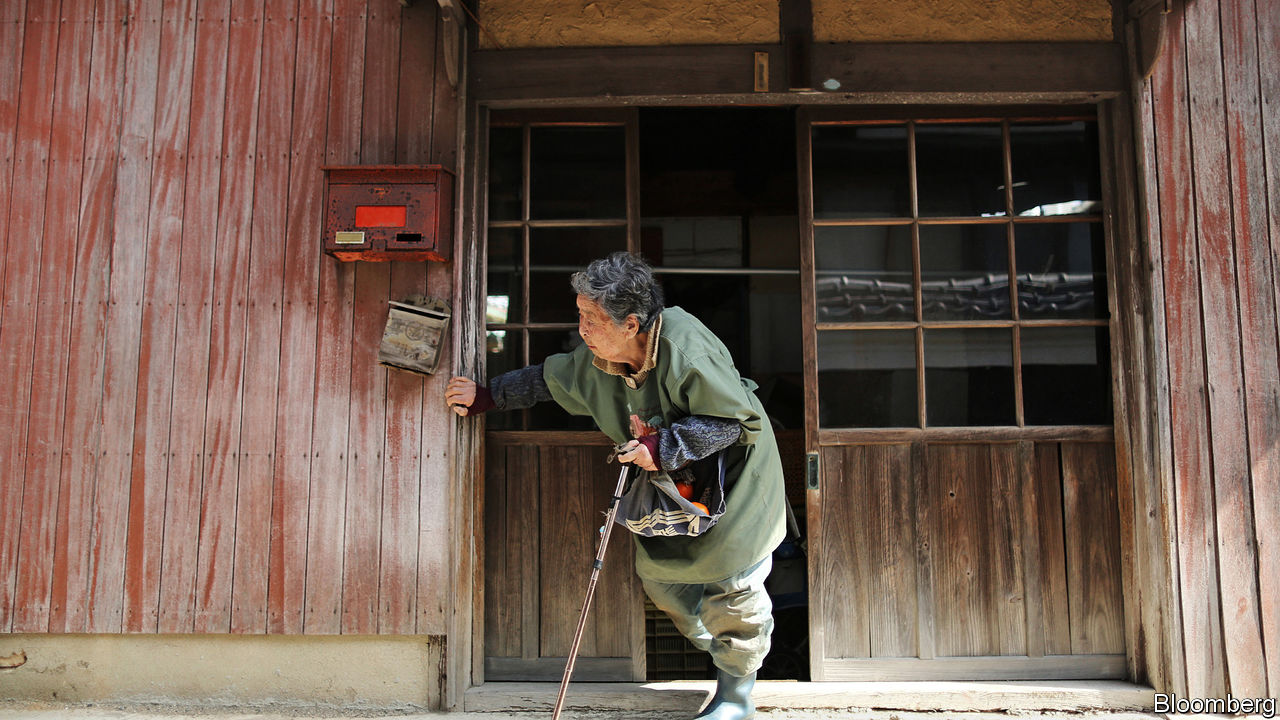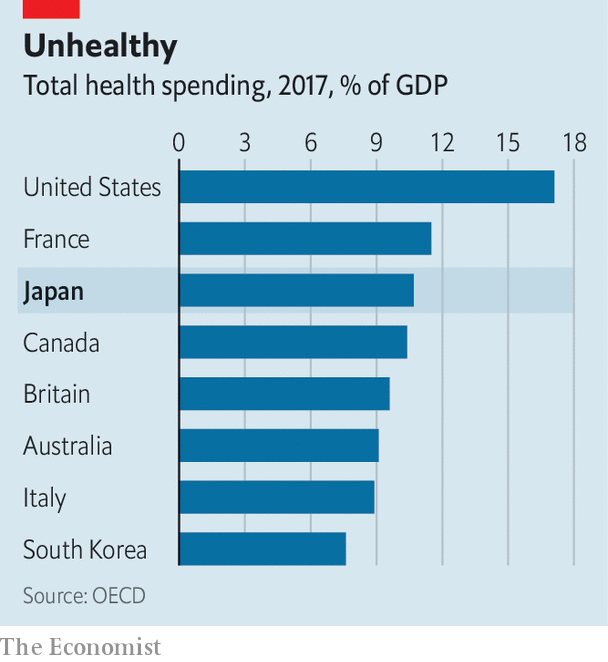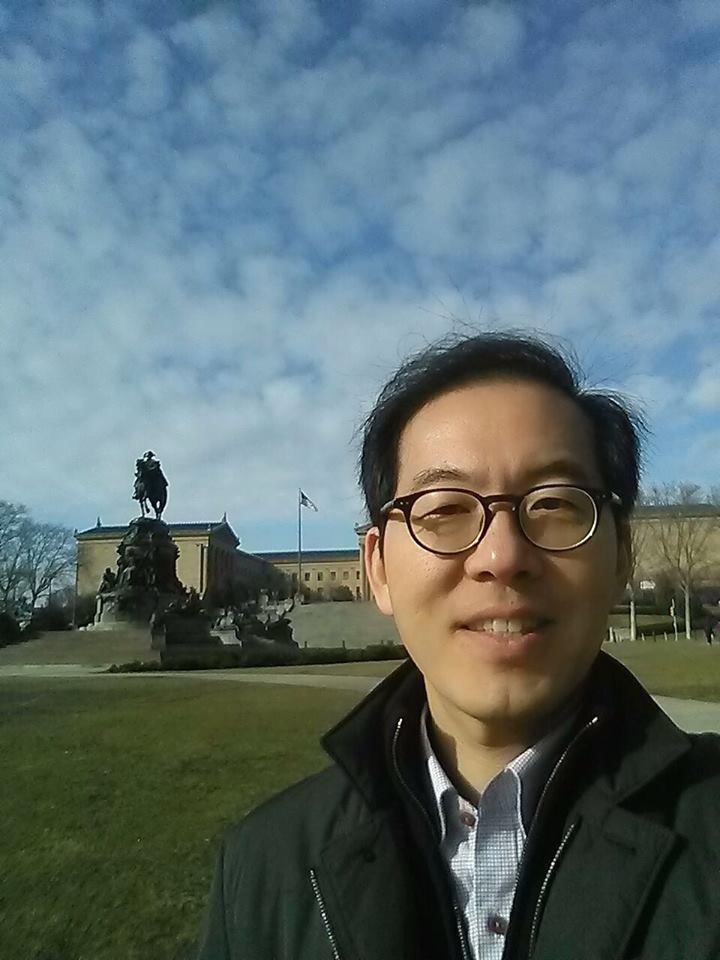검색결과 리스트
개인ㅇㄴ금에 해당되는 글 1건
- 2019.01.28 고령자의 병원 밖 임종
글
고령자의 병원 밖 임종
일본의 평균 수명은 84세로 세계에서 가장 높다. 이는 인구의 상당수가 노인이라는 것을 의미(미국인의 15 %, 독일인의 21 %가 65 세 이상인 반면 일본은 28 %이다)하고 노인들이 많아질수록 건강관리 비용이 더 증가한다는 것을 의미한다. 2018년 일본정부는 공적 의료보험에 부과하는 비용 이외에 건강관리 및 간호사업을 위해 15조엔(총 지출의 15 %, 약153조원)을 책정했다. 공적부채가 GDP의 250 %에 육박하게 됨에 따라 비용절감 방안을 절실히 찾던 중 병원이 아닌 집에서 노인을 돌보는 것이 최선의 선택이라고 여기는 것 같다.
일본은 40세 이상인 사람들이 65세 이상인 사람들을 위해 장기요양보험을 위해 보험료를 납입하는 제도를 2000년에 도입했다. 보험료가 이 서비스 비용의 약 60%를 차지하고 정부는 나머지 비용을 지불한다. 75세 이상인 사람의 평균 연간 의료비는 942,000엔인 반면 이하인 사람은 221,000 엔에 불과하다. 전반적으로 노인 수가 증가하고 있지는 않지만, 노인들이 알츠하이머나 당뇨병을 앓고 있음에도 오래 살기 때문에 지출이 많은 것이다.
따라서 일본정부는 수년간 재택 간호를 장려해 왔고, 재택 방문을위한 특별 간호 시설의 수는 2014년 7,473개서 2018년 10,418개로 증가했다. 도쿄근방의 한 마을은 단순히 진료 및 약처방을 하는 것이외에 환자와 보호자에게 컨설팅을 해주고 모임을 주선하는 설치하기도 하였다. 그럼에도 일본인의 13%만이 집에서 임종하고 있다.
일본 정부는 퇴직 연령을 올리면 사람들은 더 건강하고 더 오래 세금을 낼 수 있다고 생각하고 있다. 정부는 또한 노인의 질병 발생률을 줄이기 위해 노력하고 있지만, 질병 예방을 위해 젊은이의 행태를 개선할 필요가 있다고 여기고 있다.
출처 : https://www.economist.com/asia/2019/01/12/japan-tries-to-keep-the-elderly-out-of-hospital
Japan tries to keep the elderly out of hospital
A greying society searches for ways to curb health-care costs

IN A SUNNY room in a small apartment in the Tokyo satellite town of Kunitachi lies Yasuyuki Ibaraki, eyes closed and breathing laboured. Yukio Miyazaki, his doctor, who visits fortnightly from a local clinic, suspects that he does not have much time left: he has brain damage from a cerebral infarction, a tumour in his digestive system and is unable to swallow or talk. Reiko, his wife, feeds him through a tube to his stomach and clears phlegm from his throat. “He is from a close-knit family and is a quiet man, so I think it is better for him to be here rather than in a hospital,” she says, over green tea and grapes.
Life expectancy in Japan is the highest in the world, at 84. This is good news for its people, but means that an ever-higher share of the population is elderly. Fully 28% of Japanese are older than 65, compared with 15% of Americans and 21% of Germans. More old people, in turn, means higher health-care costs. Last year the government budgeted ¥15trn ($138bn, or 15% of its total expenditure) for health care and nursing, excluding the charges it levies for the public health-insurance scheme. With public debt at 250% of GDP, and debt service consuming a further 24% of spending, the government is looking desperately for ways to cut costs. It reckons caring for people at home is one of its best options.
All Japanese pay a monthly premium to the public insurance scheme, either through their employer or the local municipality. In return they are entitled to treatment and drugs from public and private doctors and hospitals, although they must also pay a portion of the cost of treatment (a co-payment, in American parlance), subject to a cap. In 2000 Japan introduced an additional public insurance scheme for long-term care for those over 65, into which people must pay from the age of 40. It works the same way. The premiums and co-payments cover around 60% of the cost of the services provided; the government pays for the rest. And it is the old who cost the most. The government reckons that the average annual cost of health care for someone over 75 is ¥942,000, compared with just ¥221,000 for everyone else.
By the standards of ageing nations, Japan has managed to curb medical costs fairly well, says Naoki Ikegami of St Luke’s International University in Tokyo. The government sets fees for services to keep costs down (although that encourages providers to perform unnecessary procedures to make more money: Japan has more CT scanners relative to its population than any other country). It has also promoted the use of generic drugs, which are cheaper.
Life-giving, budget-busting
Nonetheless, the country has crept up to sixth place in the OECD’s ranking of the share of GDP spent on health care, behind France and America, but ahead of Italy and South Korea—two other ageing countries (see chart). It is not just that the number of old people is increasing; spending per person is rising, too, as people live longer with diseases like Alzheimer’s and diabetes.

Japan has promoted home care for many years, but it is pushing it harder now. The policy is especially beneficial given that the average hospital stay in Japan is three times longer than in the Netherlands, for instance. The health ministry reckons that 1m people will receive care at home in 2025—one-and-a-half times the current total. The number of special nursing units exclusively for home visits has risen from 7,473 in 2014 to 10,418 in 2018.
Last year a government panel suggested raising the amount doctors are paid for home visits and making consultations conducted via video-conferencing services eligible, too. It also proposed new rules to encourage care at home. Hospitals should be obliged to talk to social services when they discharge a patient, for example.
Some municipalities are already offering good care in the community. Onomichi, a small provincial city that is even older than the country as a whole, is one. Its medical facilities have 15-minute “care conferences” with doctors, nurses, family members and even dentists, to discuss how they will go about looking after people. “It used to be hard for hospitals to tell a patient to return home as there was no system for that; that has changed,” says Hisashi Katayama, a doctor.
Community care for specific diseases is improving, too. Take dementia, which currently affects 5m Japanese (4% of the population), and will afflict 6-7% by 2030. Rather than provide only institutional care and medicine, some towns, such as Matsudo, north-east of Tokyo, have set up cafés to offer advice and companionship to patients and their carers. Day centres that give respite to families tending to elderly relatives are common. Much more could be done: only 13% of Japanese die at home, although most say they want to.
But more widespread home care will not be enough to make Japan’s health care affordable. The government of Shinzo Abe wants to revamp the social-security system, which it reckons will help reduce health-care costs. Raising the retirement age, for example, will keep people active, healthier and paying tax for longer. The government also wants to try to reduce the incidence of diseases that affect older people, but have their origins in behaviour at a younger age. “We have tended to focus on the old, but we need to look at the younger to prevent disease,” says Kazumi Nishikawa of the economy ministry. He is particularly focused on giving people more information on what causes diabetes, which is on the rise in Japan, or exercises that can stem the progression of dementia.
People are likely to have to pay more for health care, too. Co-payments for many of those over 75 are only 10%, compared with 30% for everyone else. The government should start by doubling that to 20%, says Shigefumi Kawamoto, managing director of Kenporen, the national federation of health-insurance societies. “Some elderly people don’t have resources, but many do,” he avers. The government could exclude some items from coverage, he says, such as over-the-counter drugs.
Meanwhile, back in Kunitachi, Dr Miyazaki talks to Reiko about her husband’s condition. She is worried that her husband is getting worse, she says, and is anxious between visits. The doctor promises to come weekly from now on.
'연금시장' 카테고리의 다른 글
| 연기금 인출의 4% 법칙 (0) | 2019.02.21 |
|---|---|
| 아슬아슬한 DB의 재정상태 (0) | 2019.02.14 |
| 계속 일하고 싶어하는 베이비붐 세대 (0) | 2019.01.24 |
| 2018년을 뒤흔든 20가지 연금뉴스 (0) | 2019.01.19 |
| 연금의 진실 (2) | 2019.01.14 |
